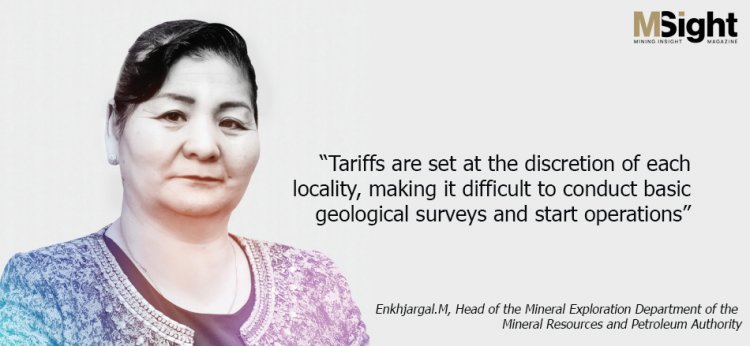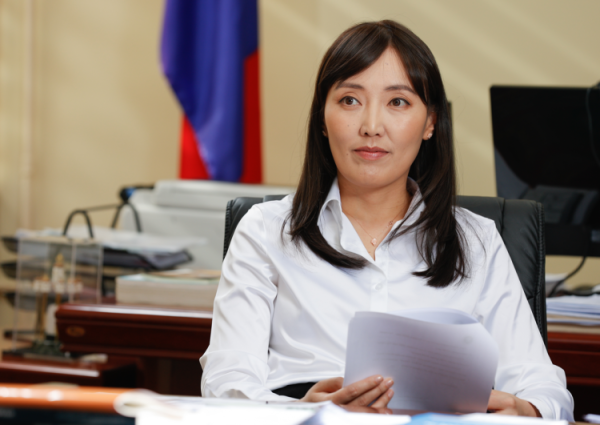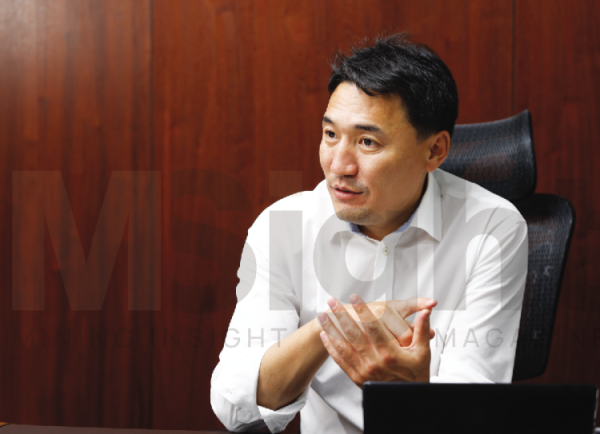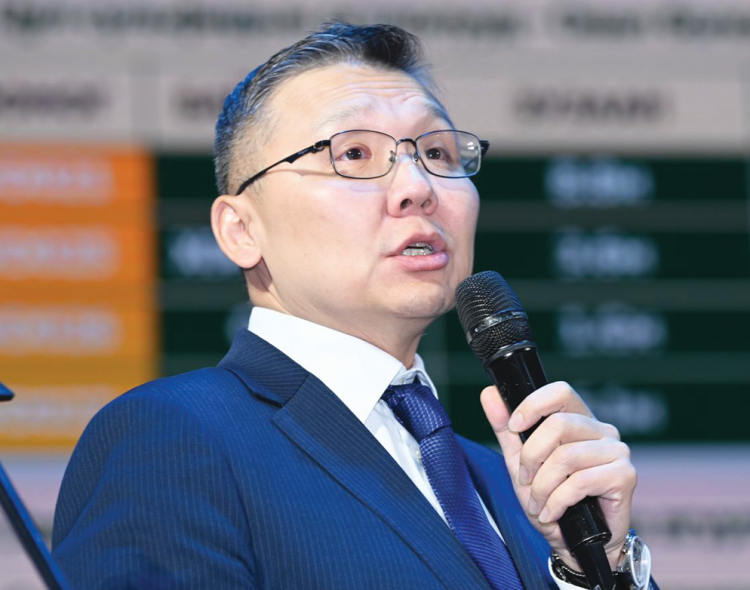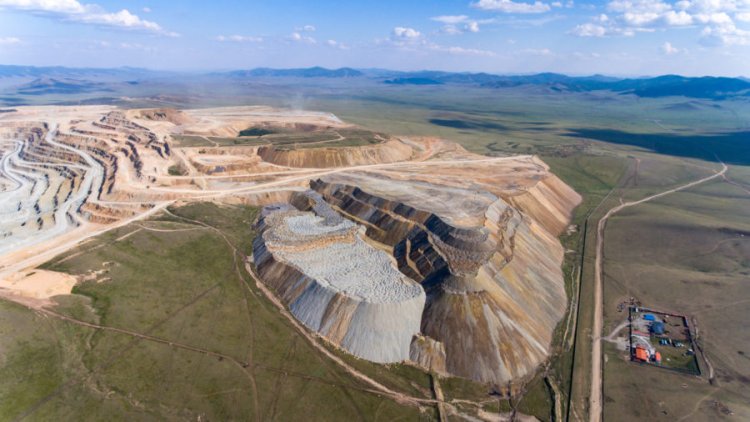ARIUNTUYA.N
As of today (January 7, 2022), there are a total of 2,636 valid licenses. Among these, 889 are for exploration and 1,747 are for exploitation. In recent years, the number of exploration licenses has sharply declined. Basic geological explorations need to be carried out 10-20 years before exploitation, but the number of exploration licenses is decreasing.
There are many reasons for the decline in geological exploration, but as you are working in the licensing unit, you probably see many reasons for this. What is your opinion on this?
For me, there are five main factors. The first one is the political environment. Besides the political instability, the lack of support or reluctance of starting mining has become a tool for some politicians to increase their careers. Second, it is a legal issue. Laws change frequently, no coherence, and there are many misunderstandings about rules. Third, there is a lack of support and protection for investment. Due to frequent changes of laws and government, funds of both foreign and domestic investors are at risk. Fourth, the coordination between the governmental and local administrations is poor. Khuvsgul, Zavkhan, and Arkhangai aimags have reported they will not support mining, and recently Uvs and Khovd followed it too. I would like to do a lot of work to make local governments and local authorities aware of mining and the benefits of the mining sector. Fifth, the operation of the licensed company is problematic. Another factor is that they do not communicate with the local community after obtaining a license. The “Vision 2050”, Mongolia’s long-term development policy, and the government’s policy on the mineral resources sector have great goals to increase geological research, increase mineral resources, and support investment, but these factors are not moving forward due to these factors. Geological mapping at a scale of 1: 50000 on 60 percent of the total area, as well as detailed exploration and prospecting, have been abandoned. In the future, a cooperation agreement between the Prime Minister, the Minister of Mining, Heavy Industry, and other relevant ministries and province governors will provide a comprehensive policy for basic geological surveys and exploration on specific areas of localities and carry out the operation on licensed areas, and it will resolve many issues and the basic research for geological exploration will move forward.
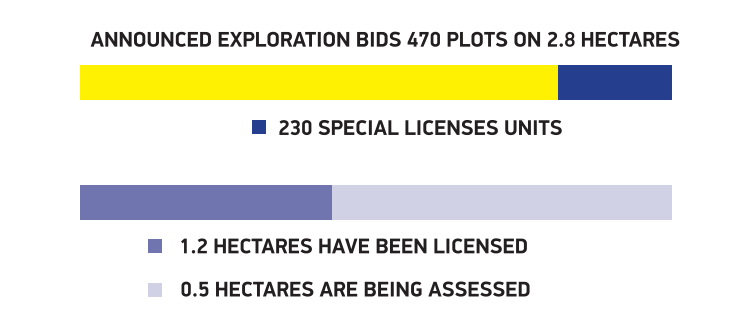
Exploration licenses are issued only through tenders and it probably has a certain effect on it. How about your view?
Of course, it is not enough to issue exploration licenses only through tenders. There is a need to increase the number of exploration licenses to be available in alternative ways. By a governmental resolution of 2018, it announced a tender for 8.4 hectares of areas. We are conducting a selection process after receiving comments from local communities. In the past, tenders were announced for 2.8 hectares out of 8.4 hectares, amounting to about 470 units of areas. About 230 of them are with special licenses, and approximately 1.2 hectares have been licensed. Moreover, 0.5 hectares or about 90 areas are being assessed.
As of today, how many companies have not submitted their documents for the announced areas? And how many areas got ready for the announcement?
No document has been submitted to us for about 150 plots on 1.1 hectares. We are preparing to declare about 400 plots on 2.3 hectares. Although 2021 was a difficult year amid the pandemic, 113 companies were selected for a total of 13 plots ranging from 45 to 57, and as of today (January 7, 2022), 109 new exploration licenses have been issued. It is a great achievement. This is the largest number of exploration licenses to be awarded since the selection basis. Money of MNT 29.6 billion has been placed in the state budget.
Q: What will happen to the announced areas that have not received proposals from companies?
A: In my personal view, it is quite better to add them to the application. I think the licensing process can be done in two ways. Open the application electronically as before. If the electronic system is broken, distributing an application number to the holders of digital signatures could be the easiest way to resolve it by the second option. Apart from the tender, geological exploration work will move forward when two such versions are opened and legalized. In addition, oil or construction filler materials can be found in non-selected areas.
According to MRPAM’s data, many exploration licenses have been revoked. What is the reason?
Licenses have been revoked due to late payment, economic downturns, and stagnant investment during the ongoing pandemic. It was a novel case that emerged in the last two years. The lack of funds for geological exploration was due to a decrease in the inflow of foreign capital and the inability to earn income from domestic operations.
Although the number of mining licenses is high, the actual number of operating mines is small, no more than 260. But the number of licenses is higher than them. How about this?
Following the previous Minerals Law, the 30-year “A” permit used to be issued immediately after the expiration of a 12-year exploration license. It leads to an increase in the number of distortions associated with that system. The next one is the issue of group “A” permits arising from the Long Name Act (The law on prohibition of mineral exploration and exploitation near water sources). If there are areas where exploration is prohibited, the “A” permit is divided into two or three A’s. For example, the “A” is left with reserves on one side and no reserves on the other side. I think the existing 1,747 mining licenses can be formed in the right order when classifying them into two categories. The one in use remains the A’s. Unused permits should be classified as exploration. Separating the exploration license means preparing it for exploration and development, and if there are no reserves, we can see what is in the construction and non-metallic areas, and if there is nothing, we can return it.
Before the year, some changes were made in the electronic system of mineral exploration and mining reports. Please give us some feedback on these changes and what issues will be addressed through the changes?
We just updated the ‘Inforep’ electronic software for receiving and monitoring exploration plans and reports. As a result of renovating the system, the need for face-to-face meetings with government agencies was eliminated, making work much easier and saving time. Thanks to it, the business has become not only easier but also faster. Moreover, entities can log in with a digital signature and submit their plan and their report. The renewal will also be done electronically. The report on resources submitted to the Minerals Professional Council has been made electronic too. To make a deposit, you have to submit your official letter and send your report electronically. In addition, the use of electronic inspection by professional inspection bodies has eliminated the need for companies and government agencies to submit and certify their work on simplified paper.
The Ministry of Environment and the Specialized Inspection Agency bear the right to inspect. To what extent this coherence is ensured in the procedures and the electronic applications?
We have created a new window to upgrade the software in terms of coordination with the environment, localities, and special inspection. As of today, a window called Specialized Inspection has been created. Then systems of environmental and local governance will go into the program. It is expected to finish by the end of the year. Exploration reports and plans have been received electronically since 2016, and there is progress that reports are submitted within the legal deadline. However, there are shortcomings in the quality and composition of the submitted reports. In particular, local documents are insufficient. To be flexible in times of the pandemic, these documents were obtained electronically and formalized after the quarantine. But, out of 934 exploration reports received in 2021, 230 reports have not yet been confirmed.
What is the reason for insufficient reports submitted from localities?
By the Minerals Law, entities approve the environmental management plans by localities. However, it is quite common for the plan not to be approved for unknown reasons, and for the soum governor and environmental inspectors not to approve Form 7 of the exploration work plan, creating a big obstacle to businesses. This was because there is an interest group in localities that does not support geological exploration and mining. It is also difficult to communicate with the localities online. It is common for locals not to respond to requests.
I came to the office on January 21, 2021. During this period, a common problem for geological exploration companies is to face social responsibility contracts with a massive cost.
Tariffs are set at the discretion of each locality, making it difficult to conduct basic geological surveys and start operations. In 2021, 109 licenses were granted through tenders. Some of those 109 licensees are unable to operate in the countryside. However, we have received more than 10 complaints about not being supported by the tender. By the law, the exploration report shall be submitted on February 15, while the plan shall be submitted on April 15. Thus, it is expected that there will be a lot of responses that they have not been able to operate, have any money, and have not worked due to local protests.
Are there any resources amended in recent years on the well-known mines? What satisfactory results have been seen from these?
Reserves and deposits registered in the State Reserve Fund in 2021 include the results of exploration work carried out at the Bayan-Airag gold-copper ore deposit in Durvuljin soum, Zavkhan aimag in 2018- 2020, the reserve supplement estimate report in Oyuut in Khanbogd soum of Umnugovi aimag, Hugo Dummett, Heruga Copper-Gold Group Exploration Results 2015-2018, the Supplementary Resource Estimates Report, the 2019 Results of Exploration, the 2nd Reservoir, the Adagin khailuur fluorspar deposit in Darkhan Soum, Khentii aimag, its supplementary report; results of exploration work carried out in the northwestern and central part of the Erdenet ovoo copper-molybdenum deposit in Bayan-Undur soum, Orkhon aimag in 2016-2020, and its resource report.
In 2022, several large and strategic deposits are expected to be amended.
Amending resources is important, firstly, because of the discovery of mined resources, secondly, the waste reserves in the dump, and thirdly, the potential for future production. In conjunction with the rapid development of technological advances in the mining sector, there is a growing need for deposits to be amended. Technologies for concentration work are changing too. As the technological solution becomes sophisticated, the amount of waste is reduced. For example, the contents of the market at that time are now being transformed into productive resources. Mining companies update their reserves every five years through feasibility studies. Likewise, the regular issuance of mineral reserves every year has a significant impact on the country’s social and economic development. Working groups set up by the Minerals and Petroleum Authority in 2016-2018 have replenished the balance of mineral resources that had been neglected for many years.
Mining Insight Magazine, January 2022



